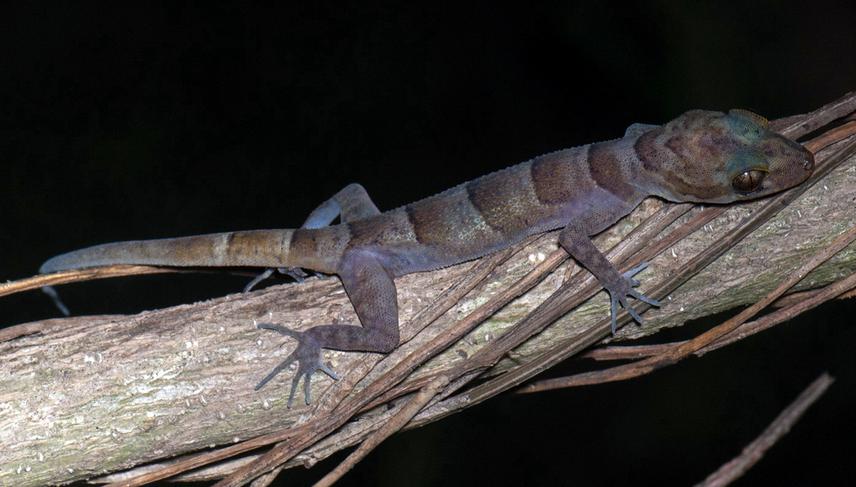Vinh Quang Luu
Other projects
12 Mar 2014
Exploration of the Herpetofauna Diversity in Karst Forests of the Hin Nam No National Protected Area, Central Laos
19 Mar 2015
The Annamite Mountain Range: An Evolutionary Barrier for Herpetofauna? A Case Study in the Karst Forest of the Hin Nam No National Protected Area, Central Laos
12 Apr 2016
Taxonomy, Phylogeny, Geography and Evolution of Bent-Toed Geckos (Squamata: Gekkonidae) Along the Annamite Mountain Range: A Case Study in Hin Nam No, Laos
The main goal is to receive a comprehensive reptile species inventory and subsequently elucidate information on species composition and community structure in Hin Nam No.

Adult female paratype (NUOL R-2013.1) of Cyrtodactylus jaegeri sp. nov. in life. © T. Calame.
This project focuses on herpetofaunal inventory of an unexplored protected area in Laos between 2013 and 2014. Several field surveys will be conducted by both Vietnamese and Laotian scientists at the Hin Nam No in 2013. Hin Nam No (HNN) is located in Khammouane Province, Laos. HNN borders Phong Nha – Ke Bang National Park (PN-KB) of Vietnam in the East, and it is a part of the largest continuous limestone ecosystems in Southeast Asia. Main forest types include evergreen forest, deciduous forest, and forest on limestone (Vinton & Walston 1999). In PN-KB, according to integrated researches from 1998 to 2006, e.g., by Ziegler (2006), a total of 93 species of reptiles was recorded in limestone ecosystems, accounting for 26% of the total reptile fauna of Vietnam.
By contrast, only 46 species of reptiles and amphibians have been recorded in HNN (Vinton & Walston 1999). As the Truong Son Mountain range is famous for its high species diversity and endemism (e.g., Sterling et al. 2006), the reptile fauna diversity currently recorded for HNN must be severely underestimated, and a number of new records including even un-described species can be expected. Therefore, I propose to investigate the taxonomy, biogeographical relationships and habitat partitioning of reptile species in HNN. The species composition will be compared to PN-KB on the opposite side of the Truong Son mountain range to gain insight into the species evolution, colonization history and adaptations to the karst environments along the Truong Son Range.
The project will provide an updated checklist of reptiles in HNN and investigate the evolutionary and environmental factors responsible for development of the community. New species and new country records for Laos will be described based on the new collection within the framework of this project.
Major threats to biodiversity, as well as biodiversity hotspots in HNN will be identified and the conservation value of the reptile fauna based on the number of globally and nationally threatened species will be evaluated. Raising the awareness for conservation among local communities, it is expected to reduce human impacts on the endangered species in the protected area. The project staff will gain skills and experience for the identification of rare species, designing field surveys, and implementing respective conservation activities.